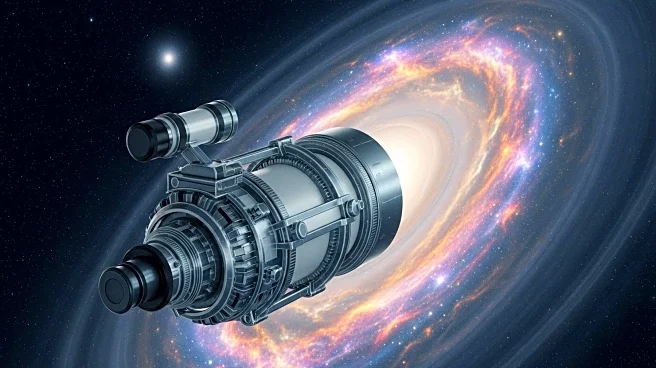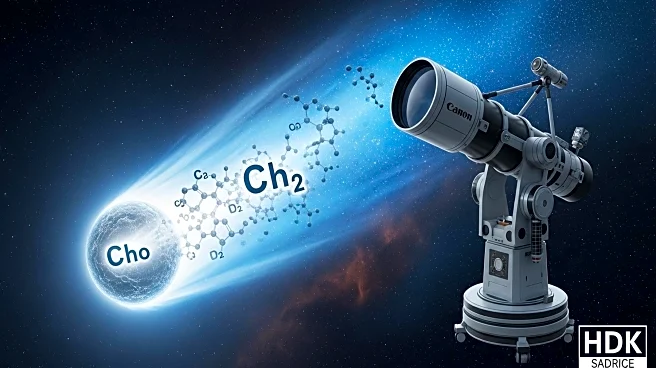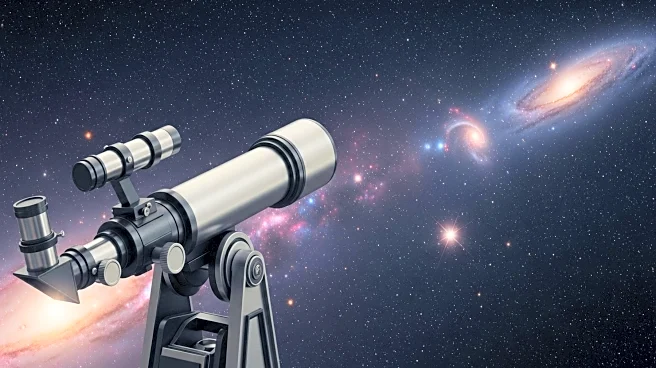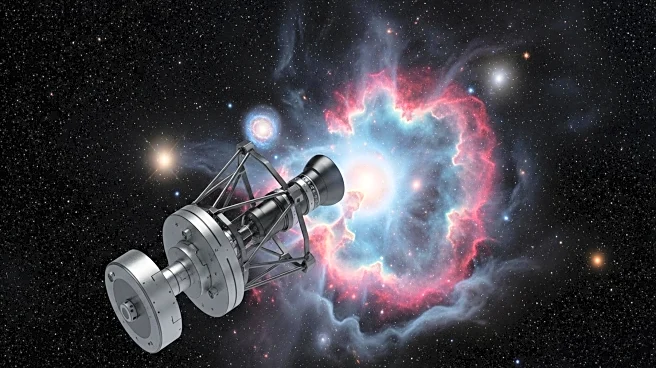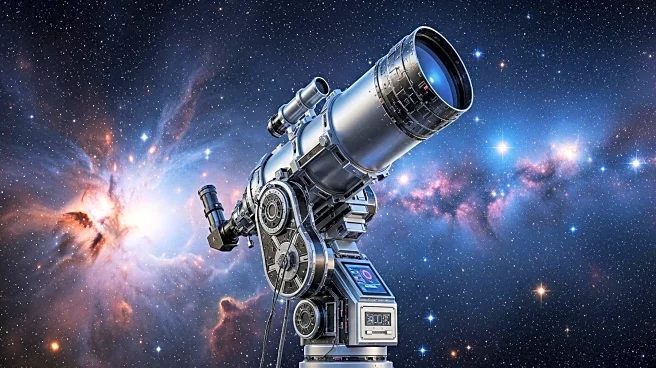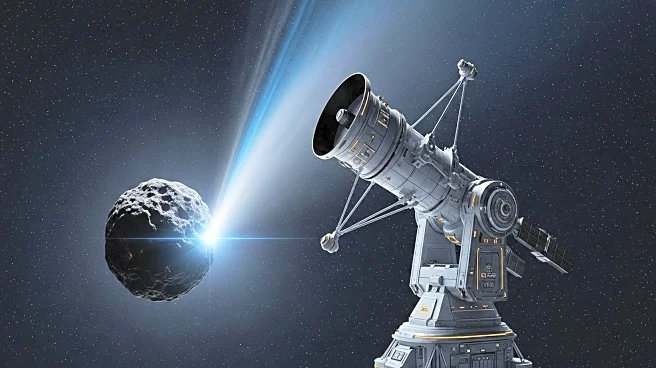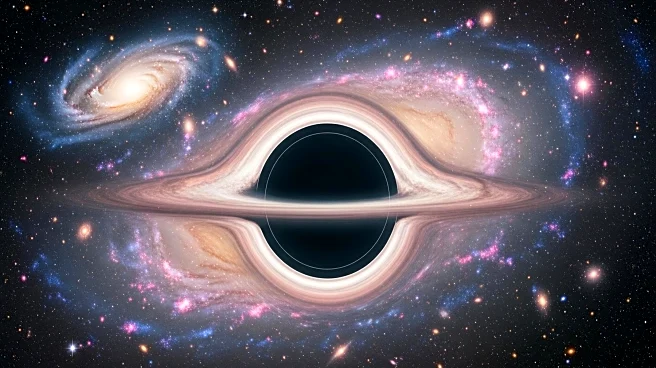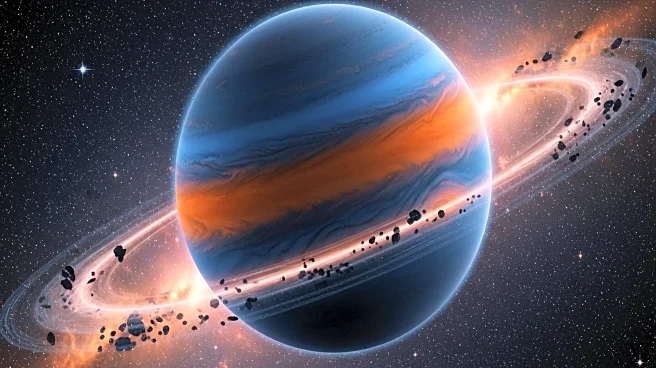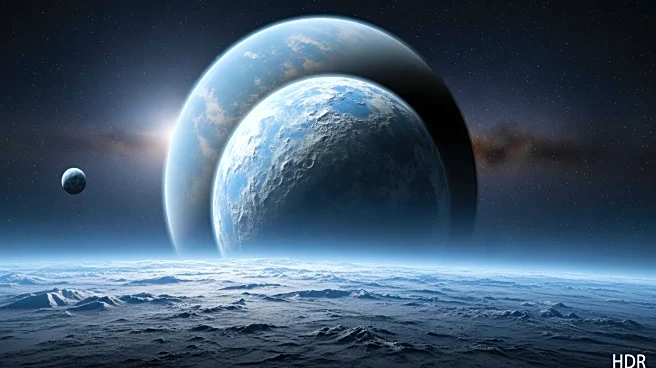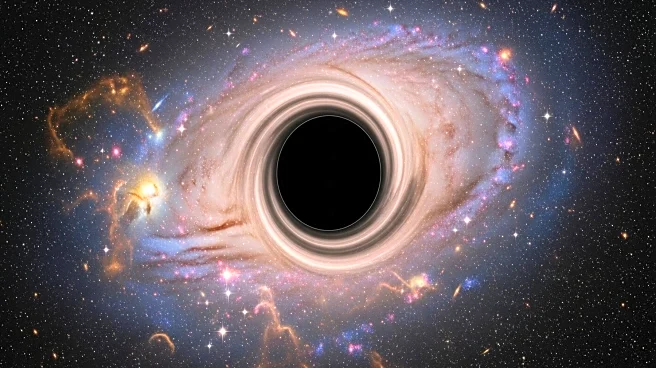What is the story about?
What's Happening?
A recent study led by Jenny Frediani at Stockholm University has uncovered a planet-forming disk with an unusually high concentration of carbon dioxide (CO2), challenging existing models of planetary formation. Using the James Webb Space Telescope (JWST), researchers observed a disk where CO2 levels are unexpectedly high, while water vapor, typically dominant in such regions, is scarcely detectable. This discovery, published in Astronomy & Astrophysics, suggests that intense ultraviolet radiation from nearby stars may be altering the disk's chemical composition. The study also identified rare isotopic variants of CO2, which could provide insights into the isotopic fingerprints found in meteorites and comets. The disk is located in the massive star-forming region NGC 6357, approximately 1.7 kiloparsecs away.
Why It's Important?
This discovery has significant implications for our understanding of planet formation and the diversity of planetary atmospheres. The presence of high CO2 levels in a planet-forming region suggests that intense radiation environments, common in massive star-forming areas, can significantly alter the chemical building blocks of planets. This could affect the habitability potential of emerging planetary systems. As most stars and planets form in such environments, understanding these effects is crucial for grasping the diversity of planetary atmospheres. The findings also highlight the capabilities of the JWST's MIRI instrument in providing detailed observations of distant, dust-enshrouded disks, offering critical insights into the conditions that govern planet formation.
What's Next?
Future research will likely focus on comparing these intense radiation environments with quieter, more isolated regions to better understand the environmental diversity that shapes planetary systems. The study's findings could lead to revisions in current models of disk chemistry and evolution, as researchers seek to explain the high CO2 levels relative to water. Additionally, the rare isotopic variants of CO2 detected in the study may offer new clues to longstanding questions about the isotopic fingerprints found in meteorites and comets, potentially reshaping our understanding of the early solar system.
Beyond the Headlines
The study underscores the importance of considering environmental factors, such as radiation fields, in the formation and evolution of planetary systems. It also highlights the role of advanced observational tools like the JWST in expanding our knowledge of the universe. The ability to observe distant disks with unprecedented detail could lead to new discoveries about the physical and chemical conditions that influence planet formation, ultimately enhancing our understanding of the potential for life beyond Earth.
AI Generated Content
Do you find this article useful?
